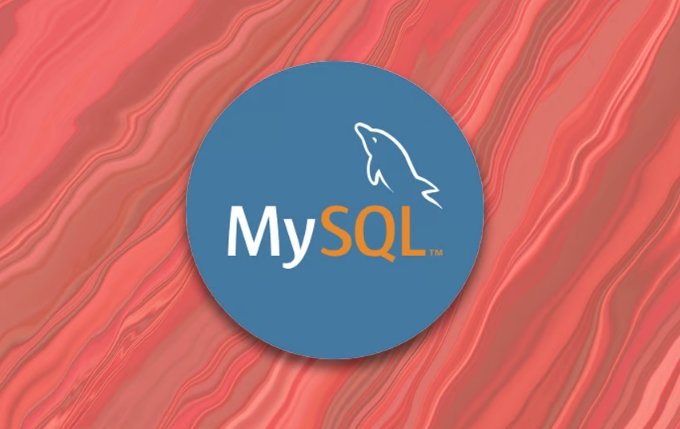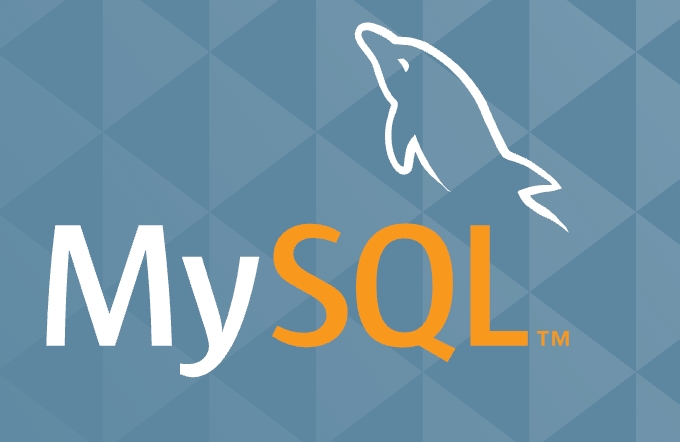To successfully connect to the MySQL server, you must meet the prerequisites such as service operation, correct address account, and open ports. It can be achieved through command line or graphical tools. First, make sure the MySQL service is running, confirm the server address (such as localhost or remote IP), use an account password with access permissions, and check whether port 3306 is open; then use the command line to execute mysql -h [host name] -u [user name] -p to connect, and enter the MySQL interface after entering the password; you can also select MySQL Workbench, Navicat and other graphical tools to fill in the host name, port number, user name and password and test the connection; if you need to connect remotely, you should create a user that allows remote access (such as CREATE USER 'newuser'@'%' IDENTIFIED BY 'password'), grant the corresponding permissions and configure the bind-address option, and ensure that the firewall releases port 3306.

Connecting to a MySQL server is the first step in using a database. The key is to correctly configure, appropriate permissions, and ensure that both network and account settings are in place.

Ensure that basic conditions are met
To successfully connect to a MySQL server, there are several prerequisites that must be met:

- The MySQL service is running : it can be confirmed via
systemctl status mysql(Linux) or service manager (Windows). - Know the server address : it can be localhost, or remote IP or domain name.
- Available accounts and passwords : Login permission is required, and some accounts may restrict access sources.
- Port open : The default port is 3306. If you are using other ports, you need to confirm in advance whether the firewall is released.
These are the most basic checks. If you can't connect, check it out here first.
The most direct connection using the command line
For users familiar with terminals, the command line connection is the fastest. The format is as follows:

mysql -h [hostname or IP] -u [username] -p
-
-his connected to the server address. If it is a local machine, it can be omitted. The default is localhost. -
-ulogged in user. -
-pmeans entering the password later.
For example:
mysql -u root -p
Enter the password after entering the MySQL command line interface.
Frequently asked questions include:
- Error password
- Users are not allowed to connect from the current host
- The port is not open or occupied
When encountering problems, you can judge the general direction based on the prompt information.
Graphics tools are more friendly
If you are not used to the command line, you can use graphical clients, such as:
- MySQL Workbench
- Navicat
- DBeaver
- phpMyAdmin (based on web pages)
These tools usually require only the following to create a connection:
- Hostname/IP address
- Port number (default 3306)
- Username and password
- Database name (optional)
After filling in, click "Test Connection" to see the results. The advantage of this type of tool is that the error prompts are more intuitive and suitable for beginners to troubleshoot problems.
Pay attention to the remote connection permission settings
If you are connecting to a MySQL server from another machine, you need to pay attention to:
- Create users that allow remote connections, not limited to localhost
- Modify user permissions to allow access to specific or all databases
- Make sure that the MySQL configuration file is not bound to 127.0.0.1 (see
bind-addresssettings)
For example, create a user that allows connections from anywhere:
CREATE USER 'newuser'@'%' IDENTIFIED BY 'password'; GRANT ALL PRIVILEGES ON *.* TO 'newuser'@'%' WITH GRANT OPTION; FLUSH PRIVILEGES;
Also, don't forget that the server's own firewall must also release port 3306.
Basically that's it. As long as the configuration is correct, the connection process is actually not complicated, but it is easy to get stuck in details.
The above is the detailed content of Establishing Connections to a MySQL Server. For more information, please follow other related articles on the PHP Chinese website!

Hot AI Tools

Undress AI Tool
Undress images for free

Undresser.AI Undress
AI-powered app for creating realistic nude photos

AI Clothes Remover
Online AI tool for removing clothes from photos.

Clothoff.io
AI clothes remover

Video Face Swap
Swap faces in any video effortlessly with our completely free AI face swap tool!

Hot Article

Hot Tools

Notepad++7.3.1
Easy-to-use and free code editor

SublimeText3 Chinese version
Chinese version, very easy to use

Zend Studio 13.0.1
Powerful PHP integrated development environment

Dreamweaver CS6
Visual web development tools

SublimeText3 Mac version
God-level code editing software (SublimeText3)

Hot Topics
 Performing logical backups using mysqldump in MySQL
Jul 06, 2025 am 02:55 AM
Performing logical backups using mysqldump in MySQL
Jul 06, 2025 am 02:55 AM
mysqldump is a common tool for performing logical backups of MySQL databases. It generates SQL files containing CREATE and INSERT statements to rebuild the database. 1. It does not back up the original file, but converts the database structure and content into portable SQL commands; 2. It is suitable for small databases or selective recovery, and is not suitable for fast recovery of TB-level data; 3. Common options include --single-transaction, --databases, --all-databases, --routines, etc.; 4. Use mysql command to import during recovery, and can turn off foreign key checks to improve speed; 5. It is recommended to test backup regularly, use compression, and automatic adjustment.
 Handling NULL Values in MySQL Columns and Queries
Jul 05, 2025 am 02:46 AM
Handling NULL Values in MySQL Columns and Queries
Jul 05, 2025 am 02:46 AM
When handling NULL values ??in MySQL, please note: 1. When designing the table, the key fields are set to NOTNULL, and optional fields are allowed NULL; 2. ISNULL or ISNOTNULL must be used with = or !=; 3. IFNULL or COALESCE functions can be used to replace the display default values; 4. Be cautious when using NULL values ??directly when inserting or updating, and pay attention to the data source and ORM framework processing methods. NULL represents an unknown value and does not equal any value, including itself. Therefore, be careful when querying, counting, and connecting tables to avoid missing data or logical errors. Rational use of functions and constraints can effectively reduce interference caused by NULL.
 Aggregating data with GROUP BY and HAVING clauses in MySQL
Jul 05, 2025 am 02:42 AM
Aggregating data with GROUP BY and HAVING clauses in MySQL
Jul 05, 2025 am 02:42 AM
GROUPBY is used to group data by field and perform aggregation operations, and HAVING is used to filter the results after grouping. For example, using GROUPBYcustomer_id can calculate the total consumption amount of each customer; using HAVING can filter out customers with a total consumption of more than 1,000. The non-aggregated fields after SELECT must appear in GROUPBY, and HAVING can be conditionally filtered using an alias or original expressions. Common techniques include counting the number of each group, grouping multiple fields, and filtering with multiple conditions.
 Paginating Results with LIMIT and OFFSET in MySQL
Jul 05, 2025 am 02:41 AM
Paginating Results with LIMIT and OFFSET in MySQL
Jul 05, 2025 am 02:41 AM
MySQL paging is commonly implemented using LIMIT and OFFSET, but its performance is poor under large data volume. 1. LIMIT controls the number of each page, OFFSET controls the starting position, and the syntax is LIMITNOFFSETM; 2. Performance problems are caused by excessive records and discarding OFFSET scans, resulting in low efficiency; 3. Optimization suggestions include using cursor paging, index acceleration, and lazy loading; 4. Cursor paging locates the starting point of the next page through the unique value of the last record of the previous page, avoiding OFFSET, which is suitable for "next page" operation, and is not suitable for random jumps.
 Calculating Database and Table Sizes in MySQL
Jul 06, 2025 am 02:41 AM
Calculating Database and Table Sizes in MySQL
Jul 06, 2025 am 02:41 AM
To view the size of the MySQL database and table, you can query the information_schema directly or use the command line tool. 1. Check the entire database size: Execute the SQL statement SELECTtable_schemaAS'Database',SUM(data_length index_length)/1024/1024AS'Size(MB)'FROMinformation_schema.tablesGROUPBYtable_schema; you can get the total size of all databases, or add WHERE conditions to limit the specific database; 2. Check the single table size: use SELECTta
 Setting up asynchronous primary-replica replication in MySQL
Jul 06, 2025 am 02:52 AM
Setting up asynchronous primary-replica replication in MySQL
Jul 06, 2025 am 02:52 AM
To set up asynchronous master-slave replication for MySQL, follow these steps: 1. Prepare the master server, enable binary logs and set a unique server-id, create a replication user and record the current log location; 2. Use mysqldump to back up the master library data and import it to the slave server; 3. Configure the server-id and relay-log of the slave server, use the CHANGEMASTER command to connect to the master library and start the replication thread; 4. Check for common problems, such as network, permissions, data consistency and self-increase conflicts, and monitor replication delays. Follow the steps above to ensure that the configuration is completed correctly.
 Implementing Transactions and Understanding ACID Properties in MySQL
Jul 08, 2025 am 02:50 AM
Implementing Transactions and Understanding ACID Properties in MySQL
Jul 08, 2025 am 02:50 AM
MySQL supports transaction processing, and uses the InnoDB storage engine to ensure data consistency and integrity. 1. Transactions are a set of SQL operations, either all succeed or all fail to roll back; 2. ACID attributes include atomicity, consistency, isolation and persistence; 3. The statements that manually control transactions are STARTTRANSACTION, COMMIT and ROLLBACK; 4. The four isolation levels include read not committed, read submitted, repeatable read and serialization; 5. Use transactions correctly to avoid long-term operation, turn off automatic commits, and reasonably handle locks and exceptions. Through these mechanisms, MySQL can achieve high reliability and concurrent control.
 Handling character sets and collations issues in MySQL
Jul 08, 2025 am 02:51 AM
Handling character sets and collations issues in MySQL
Jul 08, 2025 am 02:51 AM
Character set and sorting rules issues are common when cross-platform migration or multi-person development, resulting in garbled code or inconsistent query. There are three core solutions: First, check and unify the character set of database, table, and fields to utf8mb4, view through SHOWCREATEDATABASE/TABLE, and modify it with ALTER statement; second, specify the utf8mb4 character set when the client connects, and set it in connection parameters or execute SETNAMES; third, select the sorting rules reasonably, and recommend using utf8mb4_unicode_ci to ensure the accuracy of comparison and sorting, and specify or modify it through ALTER when building the library and table.






